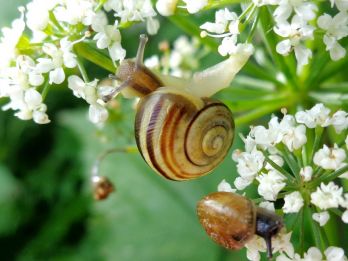Heath snail
Heath snail (Xerolenta obvia) is an exotic species to Australia, which could thrive in our environment and cause serious issues.
Background
Native to south-eastern Europe and Asia Minor, the heath snail has localised populations in Canada and the United States of America.
It lives on land, favouring dry grassy areas, open fields, dunes, and rocky hillsides.
The heath snail has been intercepted in shipments of vehicles from Europe at the Australian border.
Impacts
This snail is known to feed on wheat, barley and fruit trees, as well as many plant species of minimal economic importance.
Its attributes indicate that it could thrive in our Mediterranean climate and calcareous soil of southern Australia's grain cropping regions. It would be readily transported between farms and districts.
The heath snail is also a vector of:
- fungal pathogens
- sheep and goat parasites.
Identification
Heath snails grow up to 16 mm high and about 22 mm in diameter, with 5-6 whorls.
The flattened globular shell is opaque white, with dark brown to black spiral stripes. The outer strip is usually the darkest, with stripes fading as they move inward.
The oval aperture is thin and brittle, and the edges may be broken. The umbilicus or shell navel is wide open and obvious.


